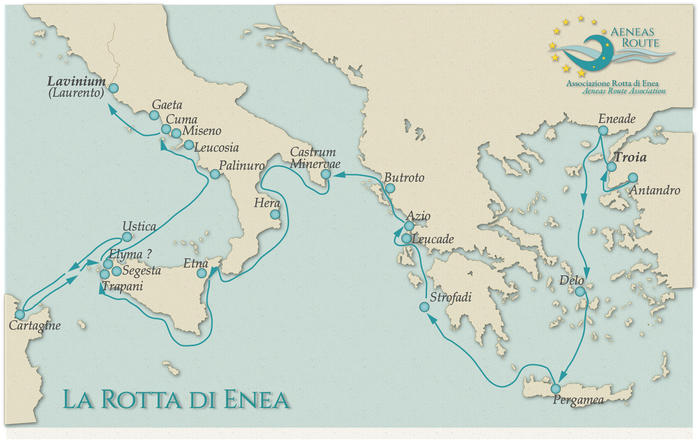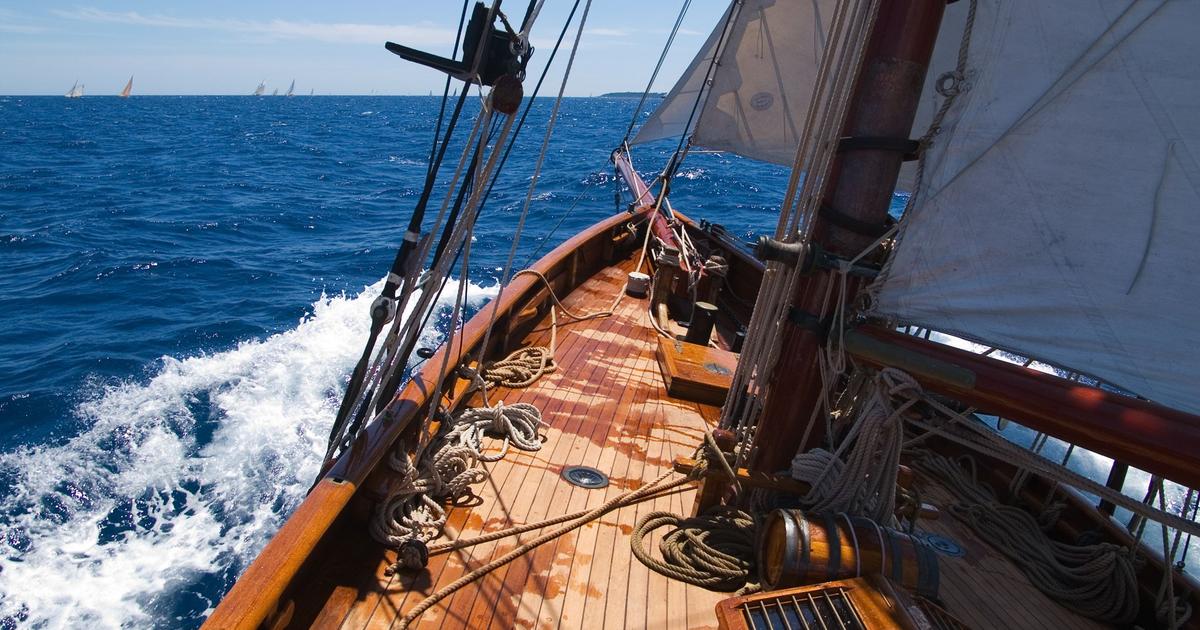- "Arma virumque cano…", wrote Virgil. "I sing the weapons and the hero who was the first to be exiled from the beaches of Troy in Italy and to the Lavini shores by the will of fate, after being beaten a lot, both by land and by sea, at the behest of the gods". This is how the epic journey of the escaped Aeneas begins, who, after having saved his father Anchises and his son Ascanius from the flames of Troy, is destined to found a new lineage beyond the sea, leaving on coasts and city the sign of its passage and surviving over the centuries the myth, history and verses of poets.
The Route of Aeneas, the mythical journey of the Trojan hero, now enters the elite of the itineraries certified by the Council of Europe, 45 / o of those routes (the first was the Camino de Santiago in 1987) that invite you to discover a heritage of archaeological, religious, artistic and naturalistic testimonies, but also to the fundamental values promoted by the Council of Europe such as democracy, human rights, intercultural exchanges.
The credit goes to the Rotta di Enea Association, which since 2018 has been promoting the project, in collaboration with the Municipality of Edremit in Turkey, the Lavinium foundation in Italy and numerous organizations and institutions at an international level, and which has managed to put together the first itinerary tourist-archaeological-maritime that from Turkey arrives in Europe, crossing the entire central-eastern Mediterranean and crossing five states. A journey, from Troy to Rome (a city that has also symbolized the European Union since the Treaties of '56) that still tickles the fantasies of great adventures, touching 21 main stages, 6 Unesco sites and 3 national parks, as well as all the beauties and excellences of the coast of southern Italy (touching Puglia, Sicily, Calabria, Campania and Lazio).
"The unanimous decision to confer the certification of the Council of Europe - says the president of the Rotta di Enea Association, Giovanni Cafiero - rewards a work of over three years. Today the Rotta unites the shores of Turkey, Greece, Tunisia, Albania and Italy with their territories, symbol of European wealth and identity ". But it is also a way to "promote the resumption of tourism and economic and cultural exchanges as an opportunity for knowledge, encounter and consolidation of European and universal values in the richness of diversity".
Map in hand, as Virgil told us, we start from the mythical Troy (Ilios), today one of the most fascinating archaeological sites in the Mediterranean, a UNESCO site since 2018 and home to an extraordinary museum where the largest sculptural collection in the world of places and mythical characters of the Iliad.
Here, less known but true Olympus of waterfalls and vegetation is the Mount Ida National Park, where Anchises would have met the future mother of Aeneas, the goddess of beauty Aphrodite. While a little further north, the archaeological site of Antandros has just returned a necropolis and a Roman villa from the imperial era, but still hides the urban area from which Aeneas sailed.
Taking off, we head to Delos, a small strip of land a few miles from Mykonos, where Apollo and Artemis were born, and to Butrint, an ancient Albanian city on the Ionian where Aeneas met Andromache. Book III of the Aeneid then places the landing in Italy in Castro, in Salento, where the Mar Museum houses the bust of a statue of Athena more than three meters high; while in the Greek colony of Crotone the sanctuary dedicated to Hera Lacinia is mentioned, also frequented by Pythagoras.
Then stop in Tunisia, in Carthage, the very rich Punic city, theater of unhappy love with Dido, to return to Sicily. After the hasty escape from the islands of the Cyclops, in fact, the Trojan ships had entered the port of Drepanon (Trapani) where Anchises died. The following year, after stopping in Carthage, they return there again to celebrate the games in memory of their elderly father. When a group of women, tired of the long wandering, sets fire to some ships, Aeneas decides to get back on the journey, but leaves the elderly, women and children the opportunity to stop, they found the city of Acesta (Segesta) and a temple to Venus. Ericina. We then go up towards the Costa degli Infreschi and Palinuro, which takes its name from the mythical helmsman who fell into the sea, conquered by the God of Sleep. And again, in Cuma,first Greek colony in the western Mediterranean, where Aeneas meets the Sibyl, to go back to Pozzuoli and the Campi Flegrei archaeological park. And again, Gaeta (Caieta) which according to Virgil would have taken its name from the nurse of Aeneas buried here. Up to the ancient Lavinum (today Pratica di Mare), the place of the origins of the Roman people (descended from Aeneas), and where scholars, among the many remains that are coming back to light, have recognized the tomb of the mythical hero.among the many remains that are coming back to light, they recognized the tomb of the mythical hero.among the many remains that are coming back to light, they recognized the tomb of the mythical hero.
(HANDLE).









